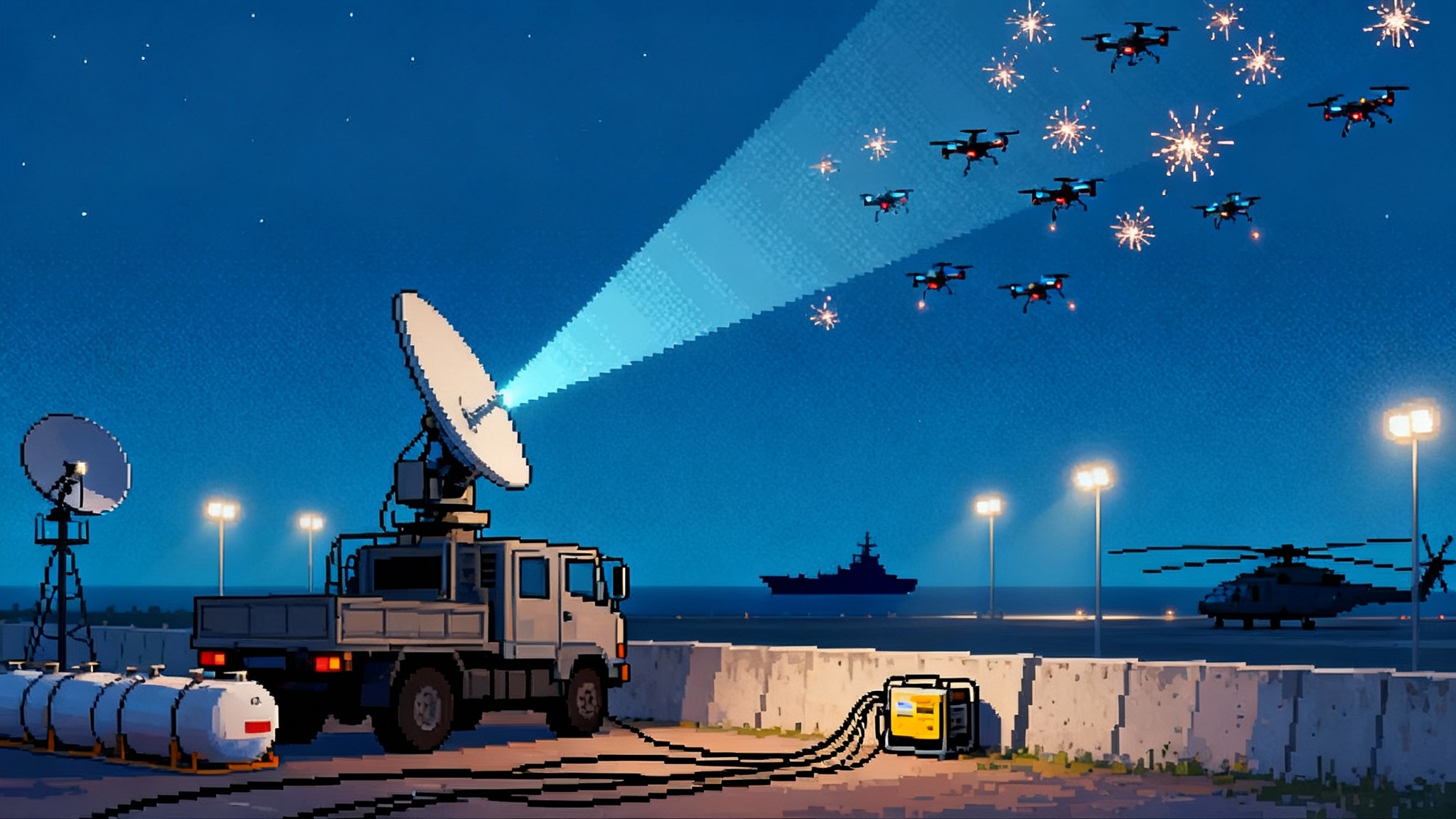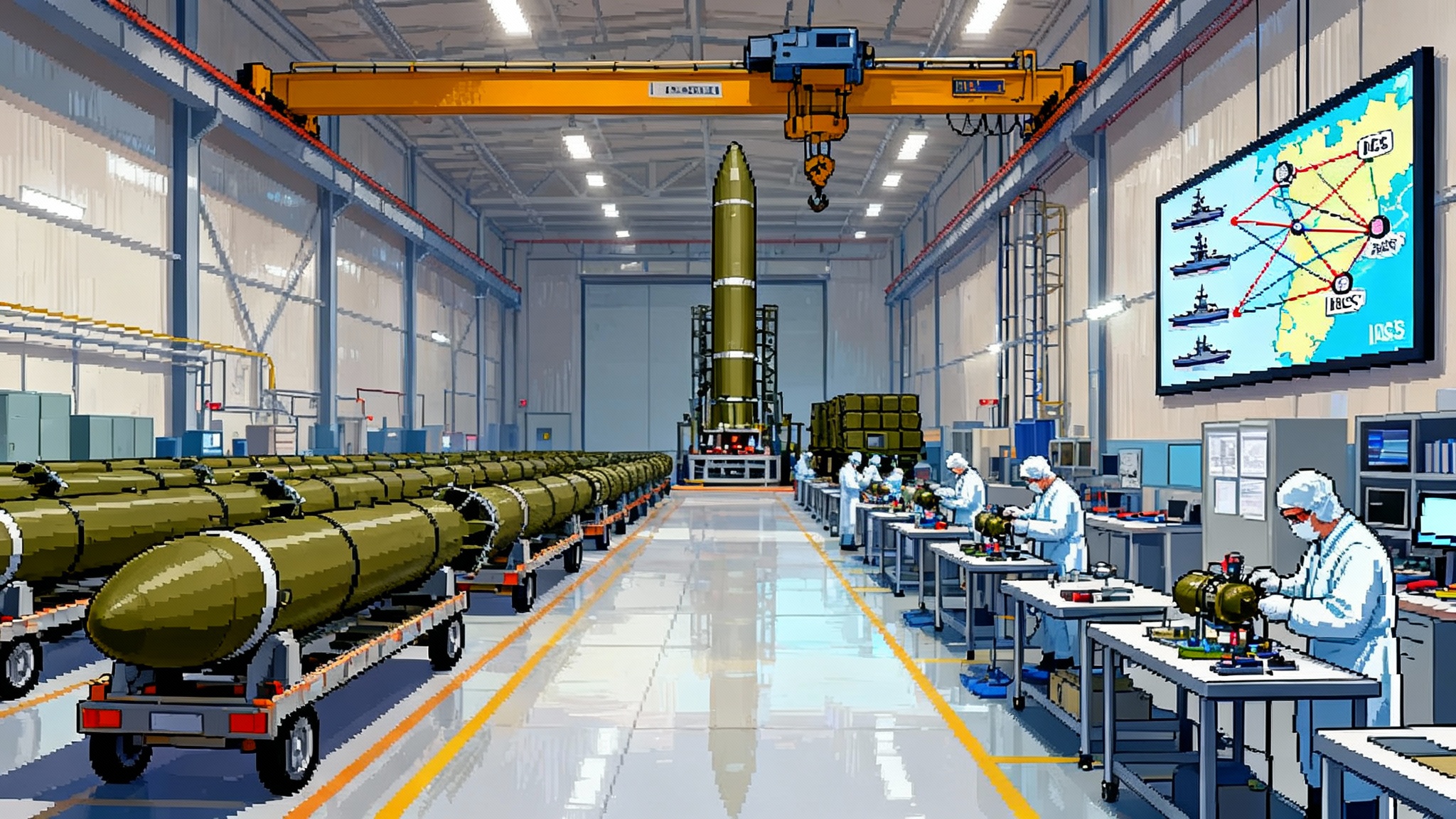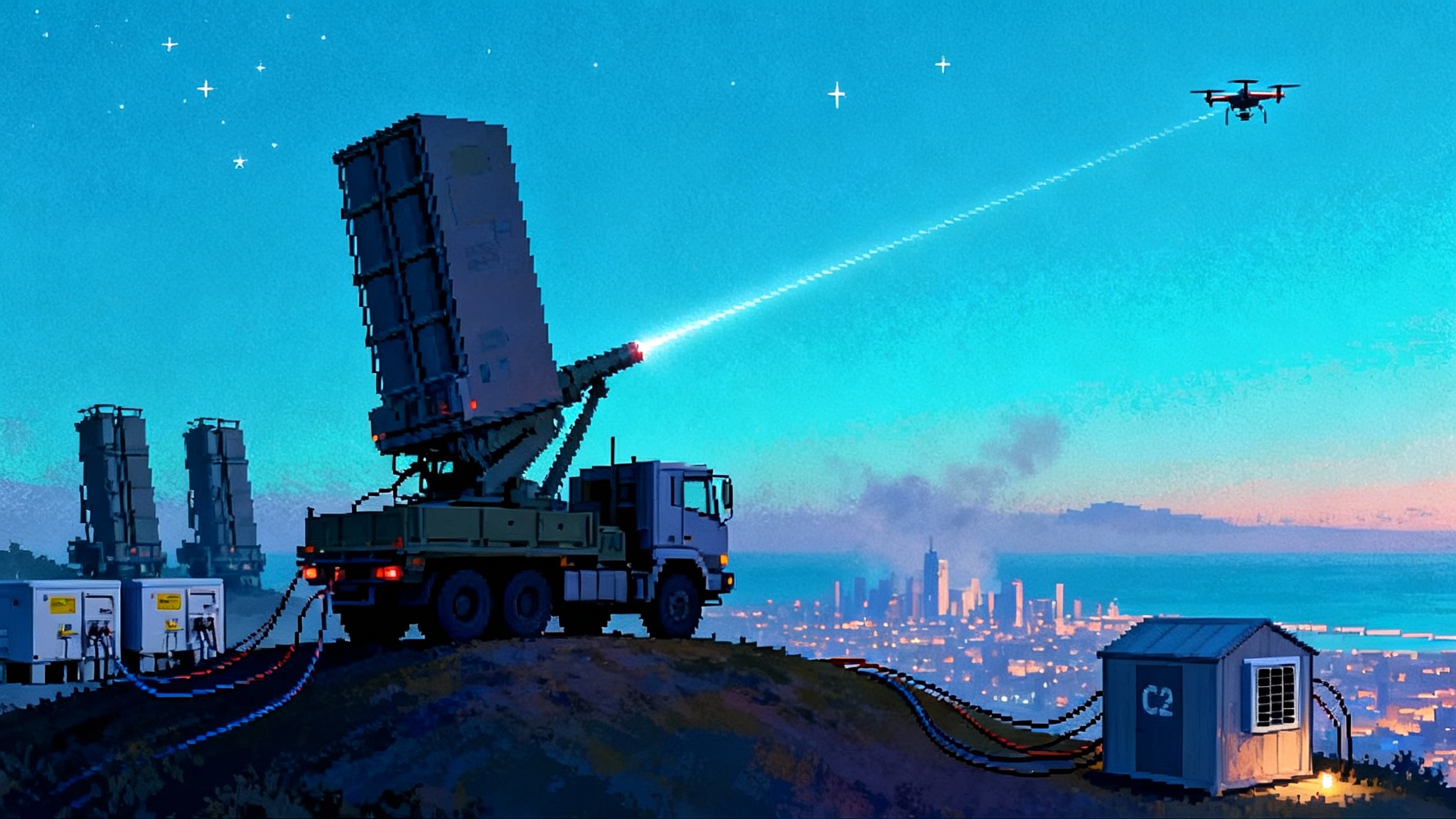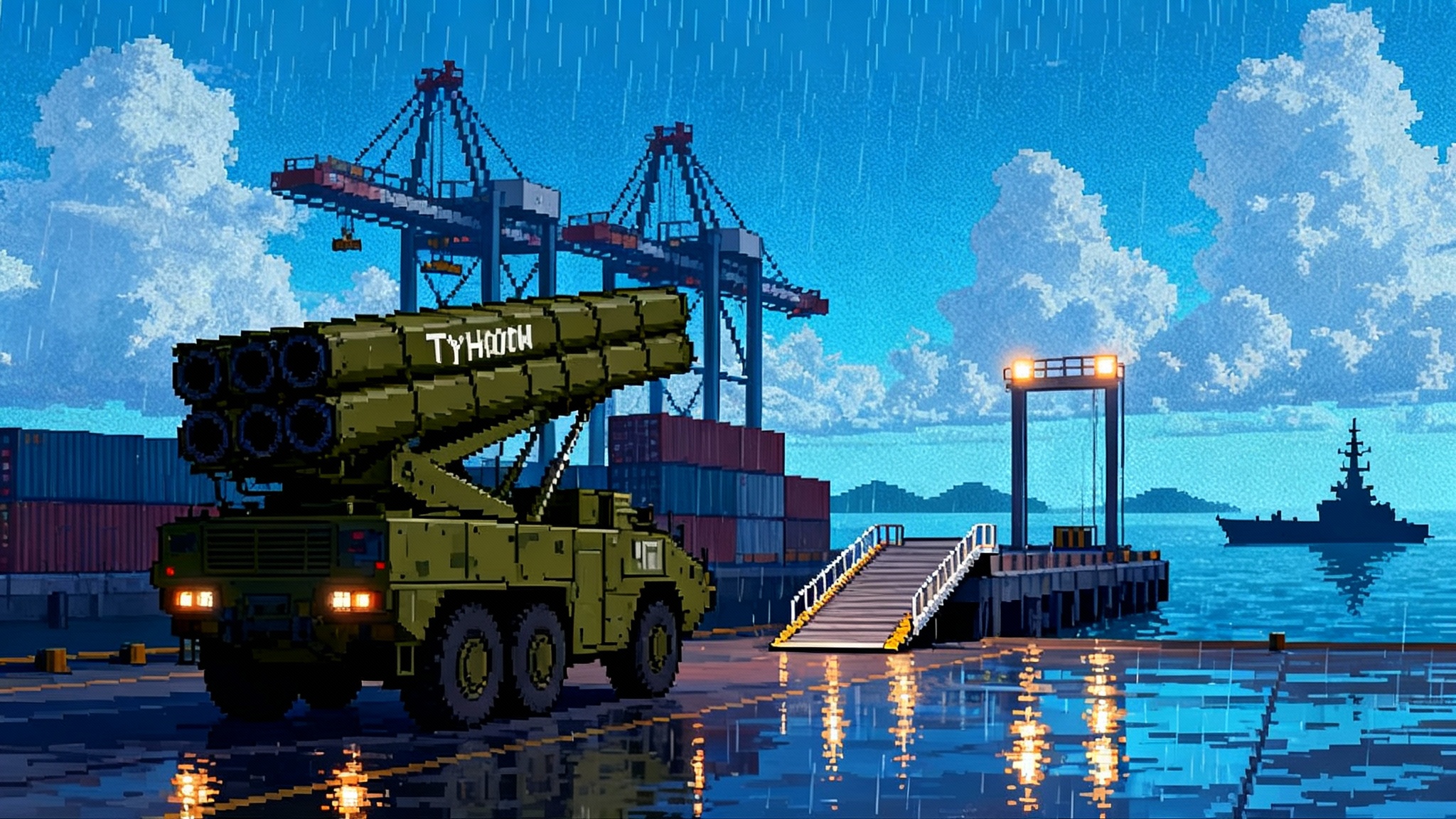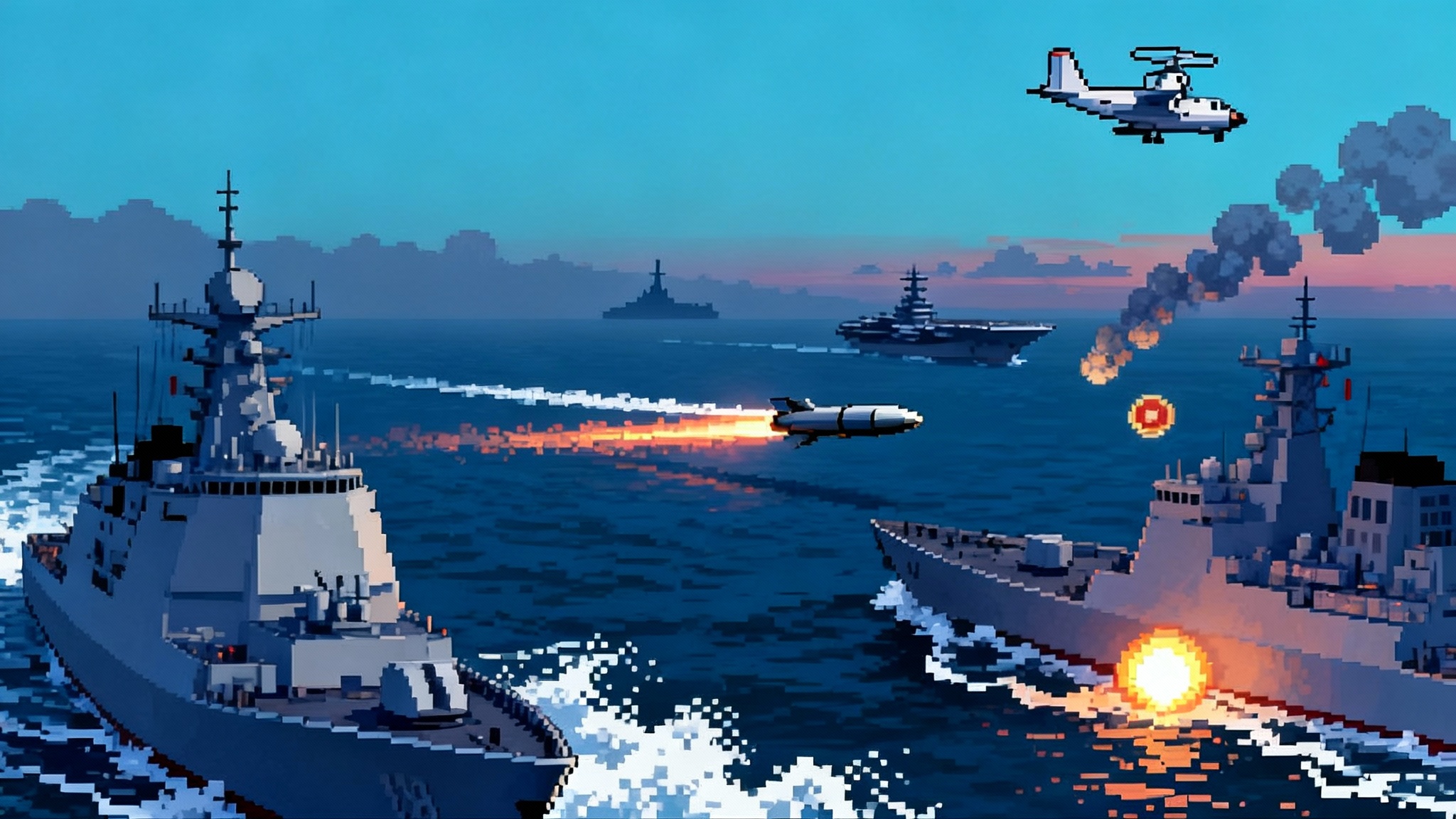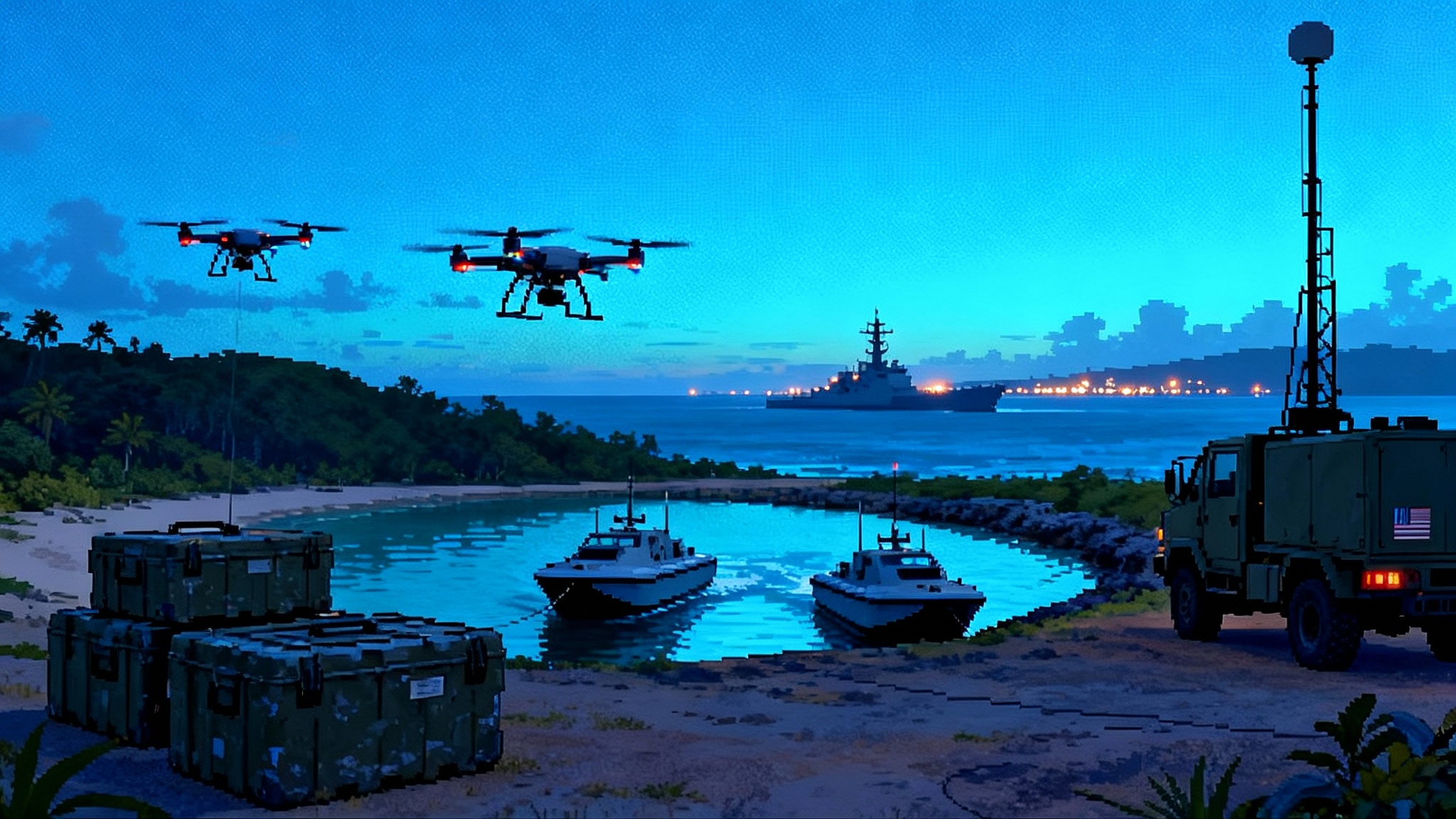Guam’s 2025 missile shield pivots to a joint kill web
The Pentagon scrapped a new mega radar for Guam and is racing toward a sensor-agnostic kill web that enables remote SM-6 shots across services. Here is how JTMC, IBCS, and Aegis reshape the fight by 2029.
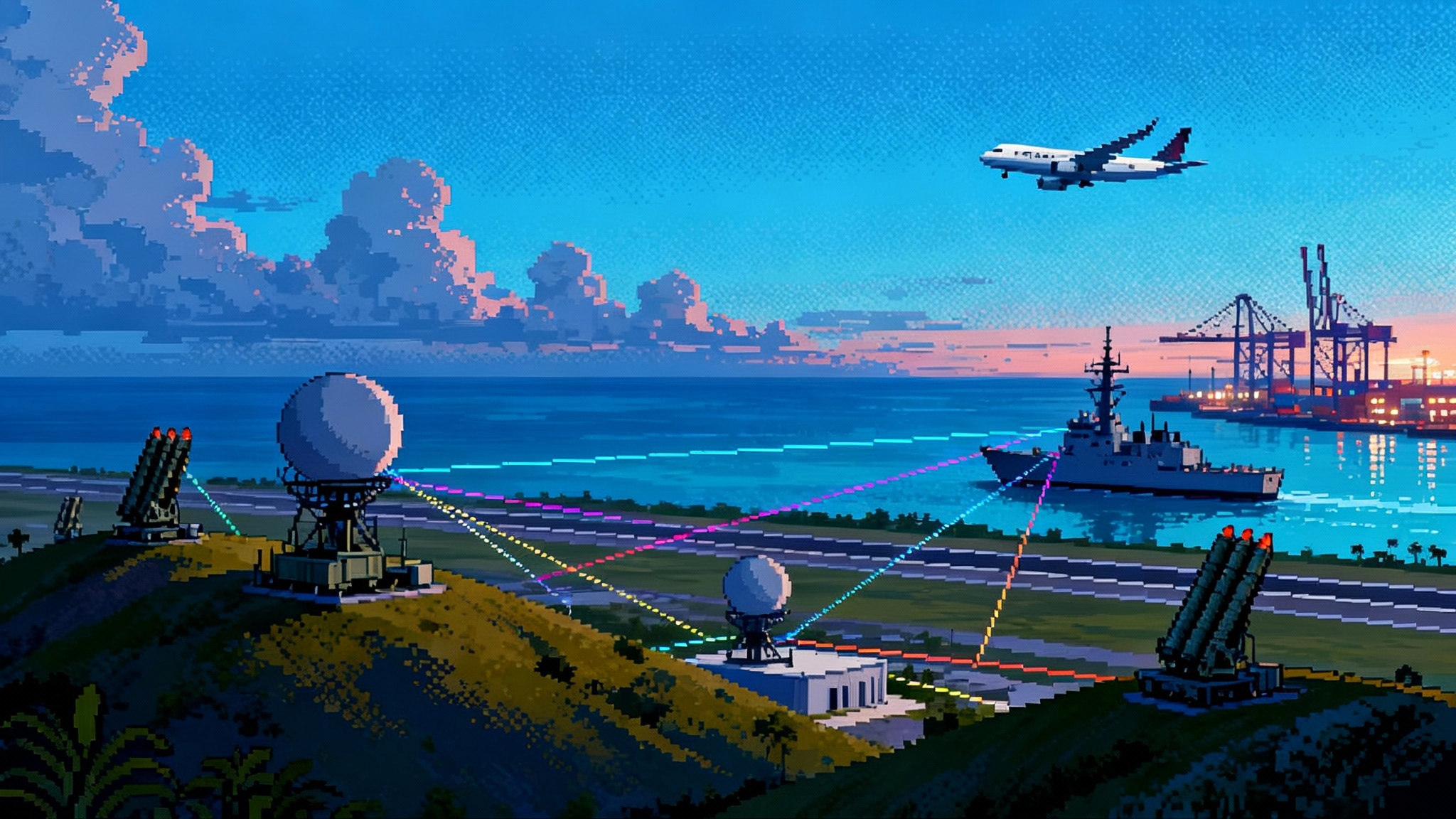
The pivot that broke the blueprint
On May 29, 2025, the defense world blinked. After years of designing Guam’s missile defense around a towering new radar, the Pentagon quietly reset the plan. Deputy Secretary of Defense Kathleen Hicks had earlier directed the Missile Defense Agency to stop developing the AN/TPY-6 radar and refocus remaining Aegis Guam funds on a faster, leaner path: minimum viable command and control that enables Standard Missile 6 shots using tracks from sensors already in the field. See the Defense News coverage.
Read that again and picture the change. Instead of waiting for one giant radar to anchor everything, Guam’s shield will behave like a local area network that can accept high quality tracks from multiple sources and pass firing solutions to whoever has the best shot. It is less about a cathedral of silicon and more about a street grid of sensors and nodes, each able to hand off target data fast enough to matter.
From mega radar to minimum viable control
The new direction asks a simple question: what is the shortest path to kill an incoming threat with what we already have? Two answers stand out.
- First, make Aegis on Guam capable of taking a precise track from someone else and shooting without hesitation. That could be a Navy ship, but it could also be an Army radar ashore.
- Second, stand up a joint track bridge that moves those precise tracks across services with time, location, and identity information intact. That bridge is the Joint Track Management Capability (JTMC). Think of JTMC as a translation layer that preserves the important details of a track when it passes from one community to another.
In practical terms, this means enabling Standard Missile 6 (SM-6) shots based on remote tracks from the Army’s Terminal High Altitude Area Defense radar (AN/TPY-2) and the new Lower Tier Air and Missile Defense Sensor (LTAMDS). The Aegis weapon system has long supported remote engagements at sea using Cooperative Engagement Capability. Now the goal is to make those remote shots routine in Guam’s mixed Navy and Army environment.
What a joint kill web looks like in practice
Imagine Guam and the surrounding seas at night. Instead of one lighthouse sweeping the horizon, you have dozens of porch lights linked by a mesh of short, resilient lines. Some lights are big search radars. Others are smaller, faster, closer to the shoreline. A destroyer’s radar might catch the first glint of a cruise missile. An Army sensor ashore might hold a ballistic track steady through its midcourse arc. A Marine expeditionary unit might add a pop-up sensor to fill a gap near the coast. JTMC collects those glints, aligns them in time, and maintains a single track identity so that Aegis can shoot as if it is looking straight at the target.
The promise is speed and flexibility. The system does not care who spotted the threat first. It cares about whose track is good enough to fire from and who has a weapon that can reach the target in time. That is the essence of a joint kill web.
Remote SM-6 shots off Army tracks
Remote firing sounds risky until you unpack what remote really means. A remote shot is not a blind shot. It is a shot based on a track that meets fire control standards even though the shooter’s own radar is not the track origin.
SM-6 is suited to this job. It is a multi-mission interceptor with an active seeker in the terminal phase and a guidance package that can accept updates in flight. With a high quality track from AN/TPY-2 or LTAMDS and frequent midcourse updates over a hardened network, SM-6 can prosecute cruise missiles, maneuvering ballistic missiles, and some hypersonic-like profiles. The missile’s seeker helps close any last inches of error as it homes in. For regional context on SM-6 employment, see Typhon and SM-6 in Japan.
The shift to remote shots unlocks geometry. A ship south of Guam might engage a target that is actually approaching from the west, as long as an Army radar on land maintains a clean track. Shooters are no longer limited by their own radar’s horizon, which matters against sea-skimming cruise missiles and low flyers hiding behind the curvature of the Earth.
Fire control quality, translated
Fire control quality is defense shorthand for a track that is so precise and stable that a weapon can fly toward a predicted intercept point with confidence. That is not just a better dot on a screen. It is a combination of:
- Accuracy: small position and velocity errors
- Stability: consistent updates without jitter or dropouts
- Latency: minimal delay from sensor measurement to track update
- Registration: known alignment between the sensor’s coordinate frame and the shooter’s frame
- Identity: confidence that the track is the right target, not a friendly aircraft or a decoy
To maintain that quality across the joint force, JTMC and the supporting networks must preserve timing down to milliseconds, correct for sensor bias, and carry rich metadata along with the track. If a radar’s range gate is known to be consistently 8 meters long, that error budget must be accounted for in the fusion. If an update arrives late, the shooter needs to know how late and how to propagate the track forward. Only then does remote become ready to fire.
JTMC, the bridge that matters now
In this new architecture, JTMC is both plumbing and policy. As plumbing, it moves track data between Navy, Army, and Air Force nodes with the right formats and the right fidelity. As policy, it controls who can modify a track, who has custody, and when custody should be handed off.
Custody sounds abstract, but it drives real decisions. If the Army radar has custody of a ballistic track and an Aegis cell on Guam wants to shoot, JTMC ensures that the engagement is built on the authoritative track and that both sides see the same truth. The bridge also supports deconfliction. Multiple shooters can collaborate without wasting interceptors on the same target or leaving gaps between engagement zones.
IBCS and THAAD by 2029
The other big decision embedded in the pivot is schedule discipline. The Government Accountability Office highlighted the mandate to complete JTMC upgrades and achieve a Joint Tactical Integrated Fire Control capability by 2029, and to accelerate integration so that Terminal High Altitude Area Defense (THAAD) can operate within the Army’s Integrated Battle Command System (IBCS). The timeline makes the goal concrete and measurable. See the milestone in GAO’s May 22 report.
IBCS matters because it unlocks the Army’s side of the joint web. With IBCS, Patriot, LTAMDS, and THAAD are not separate stacks. They become a family where any sensor can feed any shooter. When THAAD lives inside IBCS and JTMC passes those tracks into Aegis, the joint picture stops being a patchwork and starts behaving like a single defense. Northrop Grumman builds IBCS. Lockheed Martin builds THAAD and the Aegis weapon system. Raytheon, part of RTX, builds SM-6 and LTAMDS. Naming the companies is not trivia. It signals who must make their interfaces work at speed, under pressure, and with the right cyber protections.
Hardening the links against Chinese electronic warfare
The People’s Liberation Army has invested heavily in electronic warfare to blind, jam, and confuse. That pressure will be constant in any crisis near Guam. The new architecture anticipates that by treating comms as part of the weapon system, not a utility.
Here is what practical hardening looks like:
- Multi-path networking: If Link 16 is degraded, nodes shift to line-of-sight radio, fiber, or satellite pathways that use protected waveforms. Diversity beats a single brittle pipe.
- Low probability signals: Radios that spread energy across wide bands and change frequencies unpredictably make it harder for an adversary to detect and disrupt transmissions.
- Time discipline at the edge: Precision timing sourced from multiple references, not just global positioning signals, sustains track quality when satellite navigation is jammed.
- Cross-domain guards: Data crosses security domains through filters that preserve tactical speed while enforcing strict checks on format and content. This blunts cyber risks without breaking the kill chain.
- Local autonomy: If the wider network takes a hit, shooters retain enough recent track data to finish engagements. The goal is graceful degradation rather than sudden darkness.
None of this is glamorous. It is closer to building a resilient power grid than launching a new missile. But if the links fail, the kill web collapses regardless of how good the interceptors are.
Direct to shooter at theater scale
Guam is the focal point because it is a U.S. territory with heavy military infrastructure, but the logic travels. A sensor on Luzon, a destroyer in the Philippine Sea, and an Army LTAMDS in Japan can all contribute. The kill web shortens kill chains across the Indo Pacific. Space-based data from the proliferated LEO layer will also help, as LEO battle network arrives.
Three practical effects follow:
- Time: Against fast flying threats, shaving seconds matters. Remote shots and track bridging can cut sensor to shooter cycles from minutes to tens of seconds. Numbers vary by geometry, but the direction of travel is clear.
- Magazine depth: If a destroyer can shoot using an Army track, it can stay on station farther from the threat and conserve its radar for the most critical cues. That spreads the defensive load and links to the U.S. missile production surge.
- Geometric flexibility: Shooters positioned for the best intercept angle can take the shot even if they did not see the target first. This widens the protective umbrella without planting more concrete.
A minute that matters: a walk through the new playbook
Consider a simplified scenario. An anti ship ballistic missile arcs toward the waters east of Guam. At T+0 seconds, the AN/TPY-2 radar at the THAAD battery picks it up post boost. By T+3 seconds, the radar has a stable track and JTMC assigns custody to the Army. By T+6 seconds, JTMC publishes a fire control quality track to the Aegis cell on Guam and to a destroyer to the south. At T+10 seconds, the Aegis cell validates the identity, checks engagement windows, and recommends two SM-6 shots for shoot look shoot. At T+14 seconds, the first SM-6 leaves the canister. The second follows shortly after. Midcourse updates ride a protected link. As the target descends and maneuvers, SM-6’s active seeker resolves the last meters of uncertainty. Intercept occurs while the target is still well outside defended asset range.
The numbers are illustrative, not prescriptive. The lesson is that when tracks move cleanly and quickly across services, the defender can compress the timeline without over reliance on a single exquisite sensor.
Risks and friction to watch
- Software integration debt: Making Aegis, IBCS, THAAD, and JTMC speak the same fast language is hard. Track fusion, identity confidence, and engagement authority logic have to match. Test quickly with real nodes and plan for painful interface sprints.
- Spectrum pressure: Expect heavy jamming attempts in and around Guam. Build margin into power budgets and antenna placement so that alternate paths are physically ready, not just sketched in a network diagram.
- Human command: A perfect machine picture can still lead to hesitation if humans do not trust it. Cross service training, shared tactics, and clear engagement authorities will matter more than new screens.
- Magazine management: Remote engagements are great until you run dry. Preposition reloads, plan common canister handling, and rehearse at-sea or austere site reloads so that the web stays lethal for days, not hours.
What 2029 really means
Deadlines focus minds. The 2029 date for JTMC upgrades and joint fire control is a forcing function. It keeps the enterprise aimed at integration and away from an eternal quest for perfect hardware. It also puts a stake in the ground for bringing THAAD fully into IBCS and thus into the wider web that Aegis can use. The details in GAO’s report are not a guarantee, but they are a public yardstick the services can be measured against.
Between now and then, the smart sequence looks like this:
- Deliver a minimum viable Aegis Guam command and control with remote fire enabled on day one.
- Field LTAMDS to Guam and other key Indo Pacific sites with IBCS hooks turned on.
- Finish the JTMC bridge features that protect identity confidence and time alignment under load.
- Run joint live fire tests that deliberately stress the network with electronic warfare while executing remote shots.
- Harden logistics for fast reload and repair on Guam and in nearby friendly ports.
The bigger shift
The Guam pivot is not just a local change. It is an admission that in a fast moving missile fight, data is the first class citizen. Radars and launchers still matter, but the decisive variable is how well tracks can be created, shared, and trusted. The move from a mega radar to a joint kill web says the Pentagon is betting on speed through integration rather than mass through single site infrastructure.
It is also a cultural shift. The Army, Navy, and Air Force have to treat each other’s sensors and shooters as native. That is what JTMC, IBCS, and Aegis command and control are driving toward. The closer they get, the more Guam’s shield looks like a theater defense fabric rather than a cluster of disconnected systems.
The bottom line
Guam’s 2025 defense pivot is a breakthrough in plain sight. By dropping the notion that one new radar could solve a theater problem, the United States is accelerating toward a sensor agnostic, shooter fluid web that trades marble monuments for agile networks. The payoff is shorter kill chains, wider engagement geometry, and better survival in a jammed, contested Indo Pacific. The work now is not glamorous. It is wiring, timing, interfaces, and training. Get those right and the next time a threat heads for Guam, the kill web will be waiting, not the blueprint.
